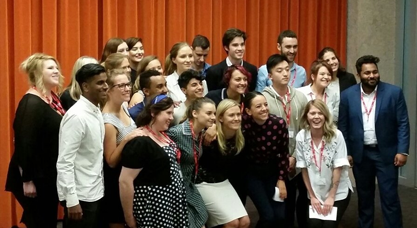A social innovation is a novel solution to a social problem that is more effective, efficient, sustainable or just than present solutions and for which the value created accrues primarily to society as a whole rather than private individuals.
Centre for Social Innovation, Graduate School of Business, Stanford University.
Last week, while I was presenting with Abigail Noble of The Impact at the Impact investment Summit Asia Pacific about foundations and impact investment, a NFP leader asked if I thought the community sector was taking enough of a lead on social innovation. Having just heard NSW Premier, Mike Baird, talking about his government's positive experience working with community organisations to roll out social benefit bonds and his government’s intention to issue two bonds each year in partnership with community organisations, the answer just had to be ‘yes’. But the question has given me food for thought. I know that there is wonderful examples of social innovation across the not for profit sector but I am not sure if government or business recognise this potential fully.
There is a tremendous appetite for innovation within the not-for-profit sector. Yesterday I was fortunate to be on the judging panel for Social Traders' national social enterprise awards. These will be announced on 30 November. There were many shining examples of innovation around service design, financing models and technology.
At Lord Mayor’s Charitable Foundation, we have just announced our annual Innovation grants – a total of $2.4 million. These projects are demonstrating new ways of delivering employment services for young people and women; looking at new property law models for affordable housing; new approaches to prevent elder abuse; the use of sustainable community gardens to enable young people who have been homeless to re-engage with learning and with school, and other innovative solutions to tough social problems. The vision and capability of organisations including Fitted for Work, SYC, Marist Youth Care, Women’s Property Initiative and others is inspiring.
The Foundation also recently funded the Australian Centre for Rural Entrepreneurship with a follow-on grant to contribute to their next stage of development. ACRE is providing school children with the tools to be leaders in solving social problems, sometimes with the aim of becoming self-employed when they are older, i.e. to become their own future job creators.
 Participants from FYA's Young Social Pioneer Program
Participants from FYA's Young Social Pioneer Program The week before last I was also one of the judges on the Foundation for Young Australians Young Social Pioneers sustainability stream. The Foundation supported this program as a proactive grant and it was fascinating to hear the 11 young social pioneers do their boardroom style presentation and then their public pitches. The winner in the sustainability category was a project to encourage clubs and competitions to recycle tennis balls – rather than sending them to landfill. It was innovative and practical. As a keen tennis player, I was very pleased that sport is now actively embracing sustainable practices. It was Game, Set and Match to Dimitri Vidin for his environmental enterprise idea!
Amidst all of this energy, creativity and action, how could I not feel positive about the level of social innovation within the not-for-profit sector?
Despite all this, I think there is a need to amplify the profile of the not-for-profit sector as leaders in social innovation. Sometimes I think that the emergence of more for purpose businesses or social benefit bonds gives the impression that business or government alone will solve our social and environmental challenges. I hope this blog demonstrates the tremendous leadership in innovation being shown by many not-for-profits. Philanthropy’s key role in this is as the source of flexible funding to test and retest, and demonstrate social innovation.
It will take all sectors in the Australian economy to solve tough long-term issues like homelessness and youth unemployment. It will take all sectors working together to transition to a sustainable and equitable future, where we use food, water and energy wisely. The not-for-profit sector is the repository of deep knowledge and strong networks built over a century by people motivated to make our community a better and more inclusive place.
The contemporary understanding of charity is more than giving a hand out or a hand up. It is especially about leaders in the not-for-profit sector working with their communities (of place or interest) using knowledge, networks and data to create a vision for a fairer, more sustainable future. The next key step in the social innovation process is the having the courage and support to help test ideas and build that future. Let’s celebrate the social innovation within Australia’s not-for-profit sector!
Catherine Brown
CEO
@CatherineB_AU
Learn about the recent Innovation Grant recipient projects >